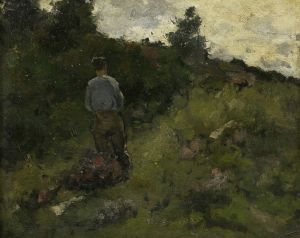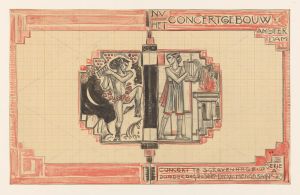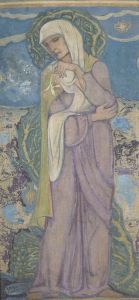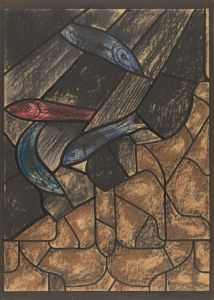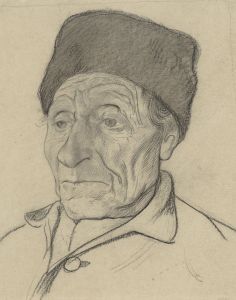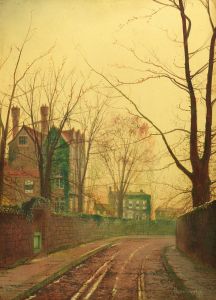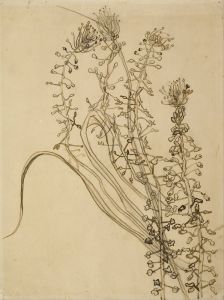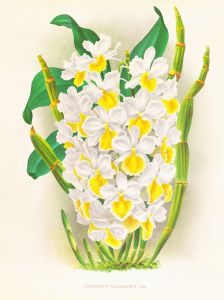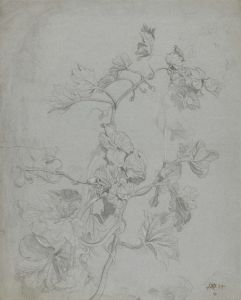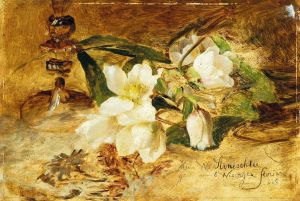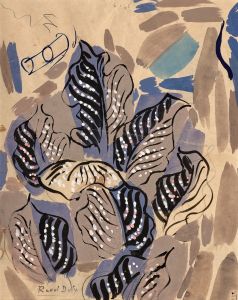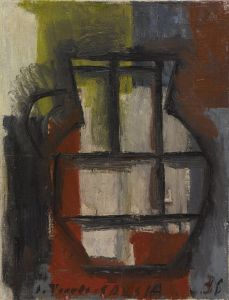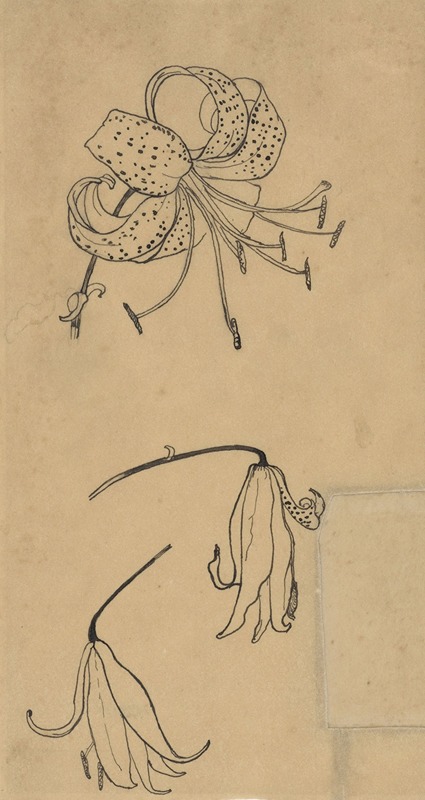
Drie tijgerlelies
A hand-painted replica of Richard Nicolaüs Roland Holst’s masterpiece Drie tijgerlelies, meticulously crafted by professional artists to capture the true essence of the original. Each piece is created with museum-quality canvas and rare mineral pigments, carefully painted by experienced artists with delicate brushstrokes and rich, layered colors to perfectly recreate the texture of the original artwork. Unlike machine-printed reproductions, this hand-painted version brings the painting to life, infused with the artist’s emotions and skill in every stroke. Whether for personal collection or home decoration, it instantly elevates the artistic atmosphere of any space.
Richard Nicolaüs Roland Holst was a prominent Dutch artist known for his contributions to the Symbolist movement in the late 19th and early 20th centuries. Born on December 4, 1868, in Amsterdam, he became a significant figure in Dutch art, not only as a painter but also as a designer and writer. His works often reflect a deep engagement with the social and political issues of his time, as well as a profound appreciation for nature and the human form.
One of his notable works is "Drie tijgerlelies" (Three Tiger Lilies), which exemplifies his skill in capturing the delicate beauty of nature. While specific details about the painting "Drie tijgerlelies" are scarce, it is consistent with Roland Holst's broader oeuvre, which often includes floral motifs and a keen attention to detail. His style is characterized by a harmonious blend of realism and symbolism, where natural elements are imbued with deeper meanings.
Roland Holst was deeply influenced by the Arts and Crafts movement, which advocated for the integration of art into everyday life and emphasized craftsmanship and design. This influence is evident in his meticulous approach to painting and his interest in decorative arts. He was also associated with the Dutch literary and artistic circles, contributing illustrations to various publications and collaborating with other artists and writers.
Throughout his career, Roland Holst was involved in various artistic endeavors beyond painting. He was a prolific designer of book covers, posters, and stained glass, showcasing his versatility and commitment to the idea that art should be accessible and integrated into all aspects of life. His work in stained glass, in particular, is highly regarded and can be seen in several buildings across the Netherlands.
Roland Holst's contributions to art were not limited to his creations; he was also an influential teacher and mentor. He served as a professor at the Rijksakademie van Beeldende Kunsten in Amsterdam, where he taught and inspired a new generation of artists. His teachings emphasized the importance of artistic integrity and the social responsibility of artists.
In addition to his artistic pursuits, Roland Holst was an active participant in the social and political discourse of his time. He was a member of the Social Democratic Workers' Party and used his art to express his ideals and advocate for social change. His commitment to these causes is reflected in the themes of his work, which often explore the relationship between humanity and nature, as well as the potential for art to inspire and transform society.
Richard Nicolaüs Roland Holst passed away on December 31, 1938, leaving behind a rich legacy of art and thought. His work continues to be celebrated for its beauty, craftsmanship, and depth of meaning. While specific information about "Drie tijgerlelies" may be limited, it remains a part of his broader body of work that exemplifies his artistic vision and dedication to the integration of art and life.






